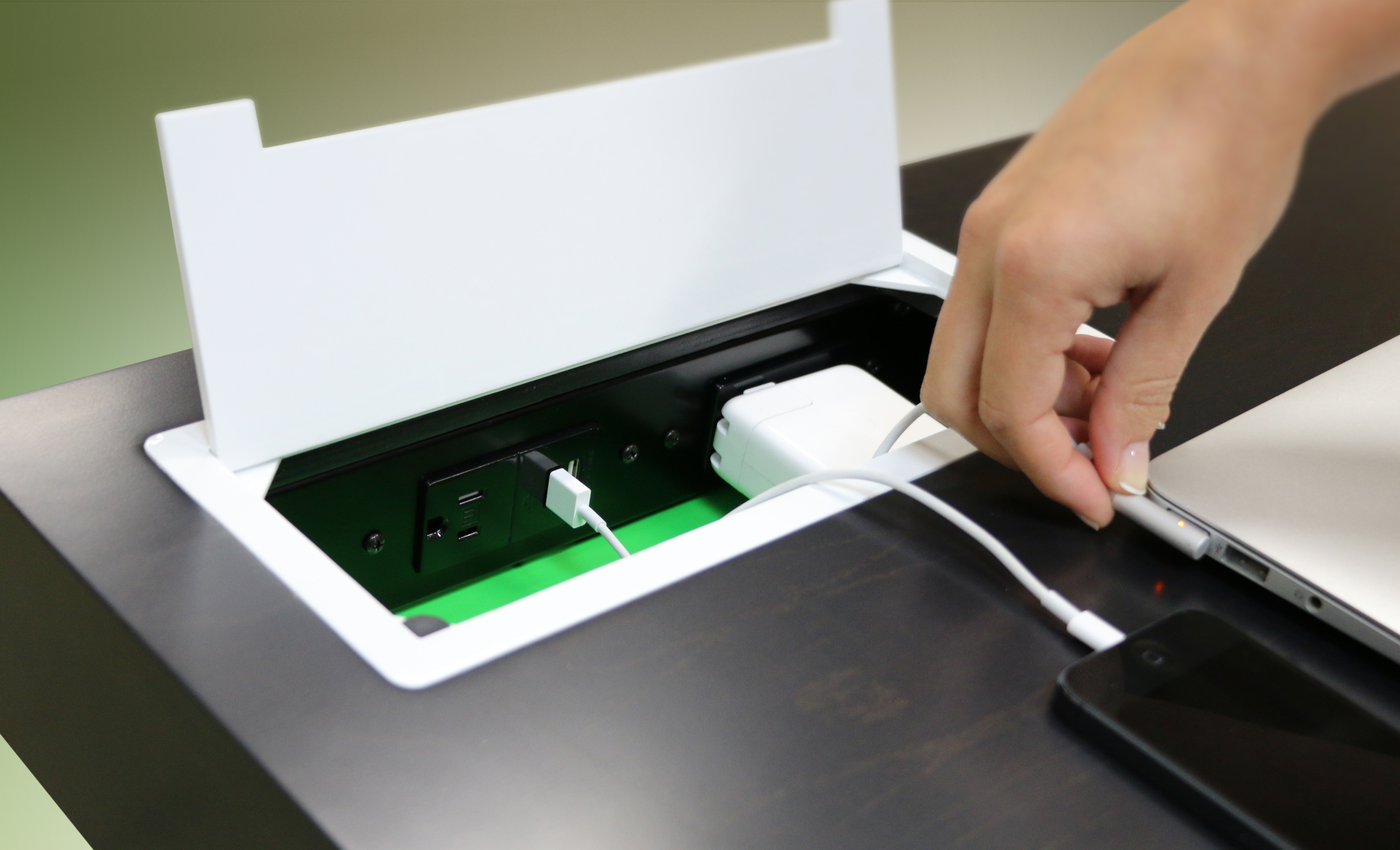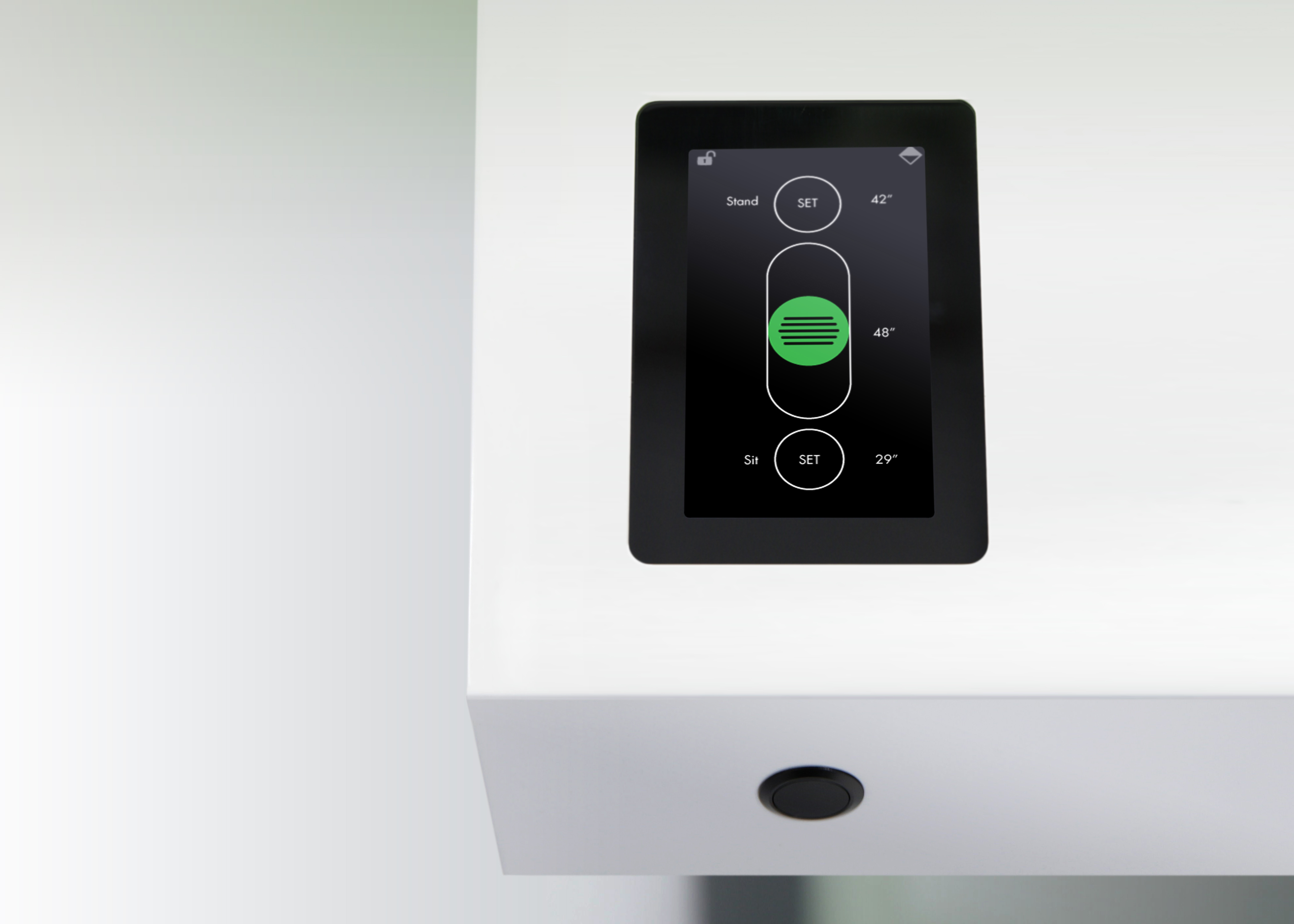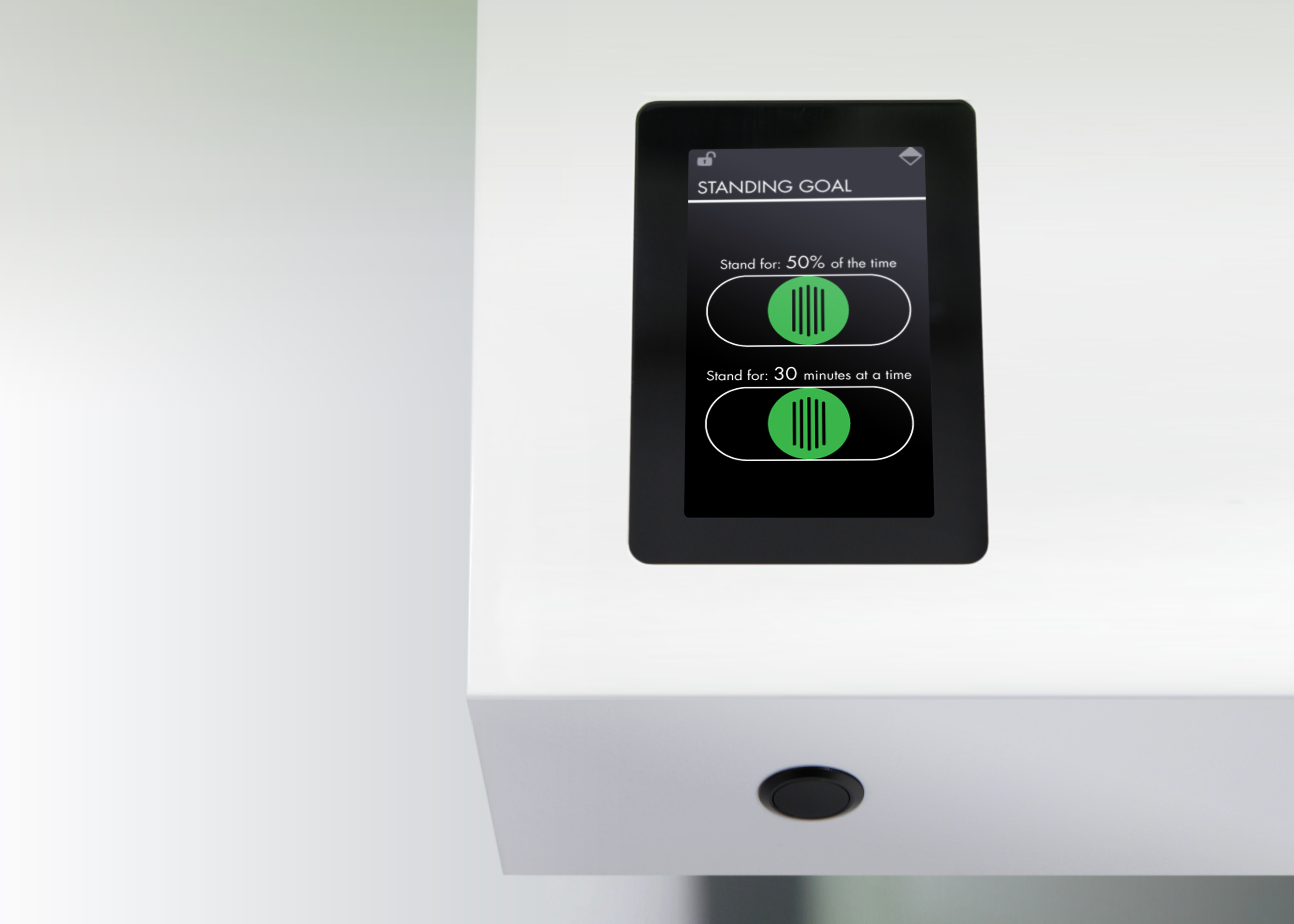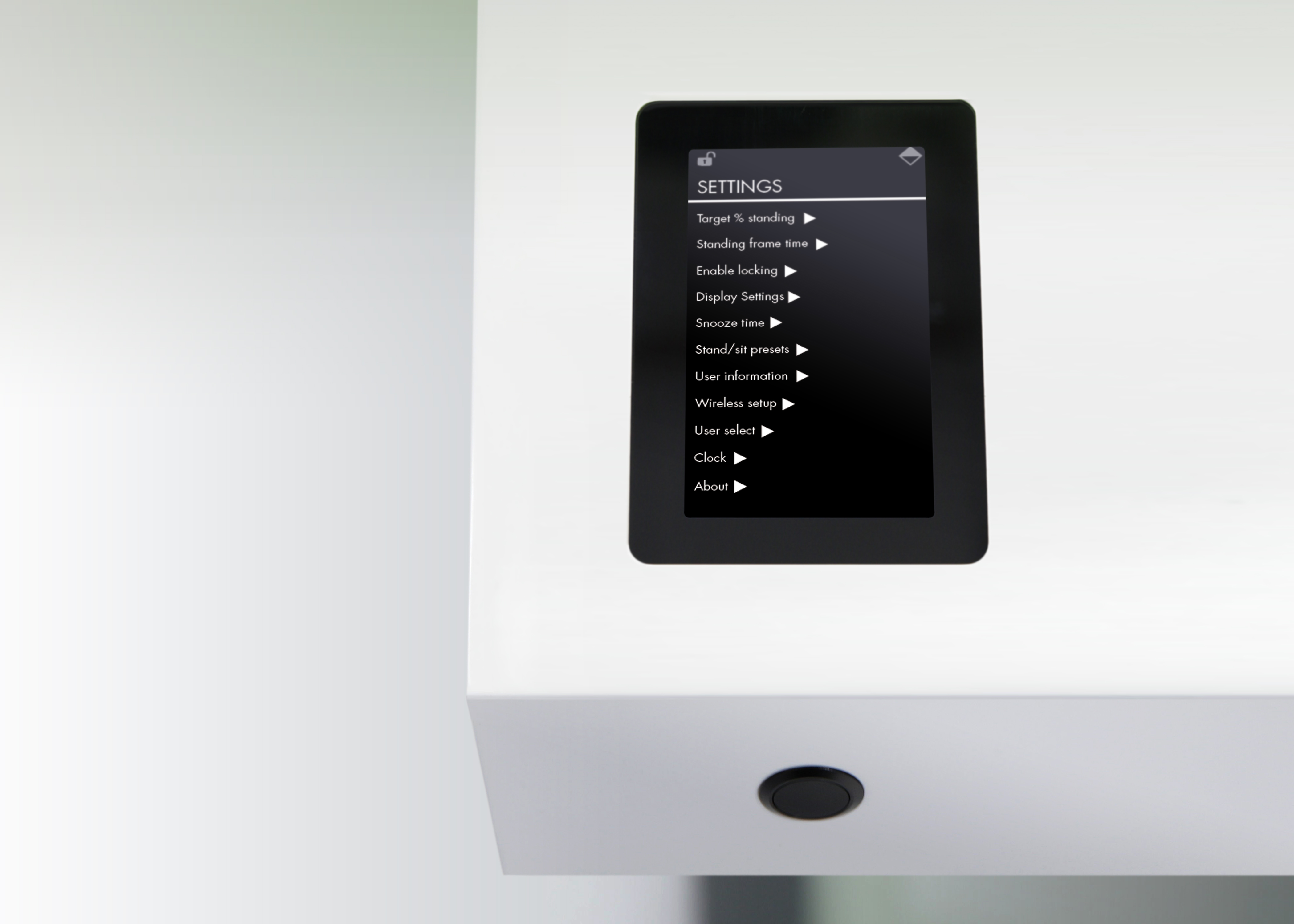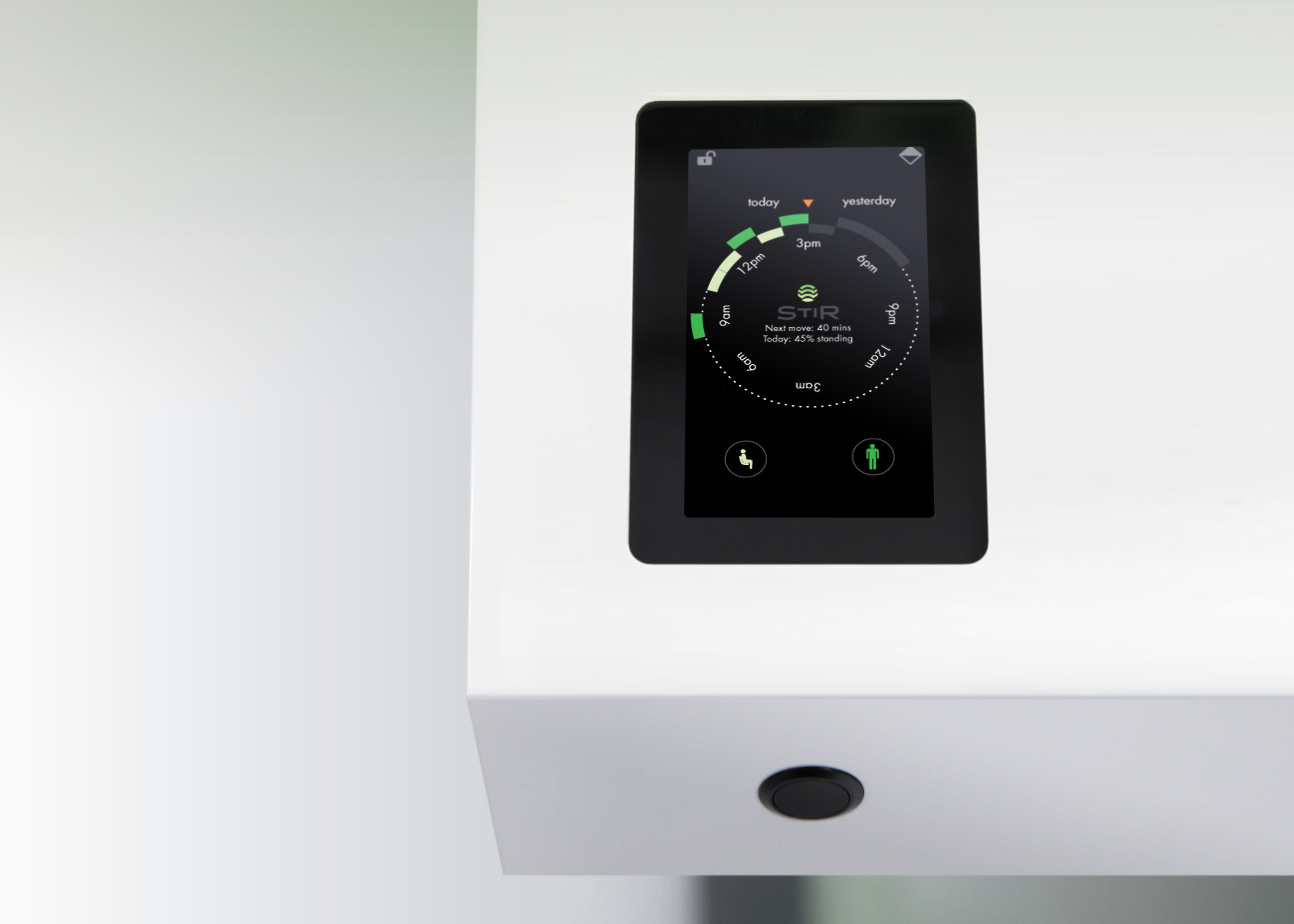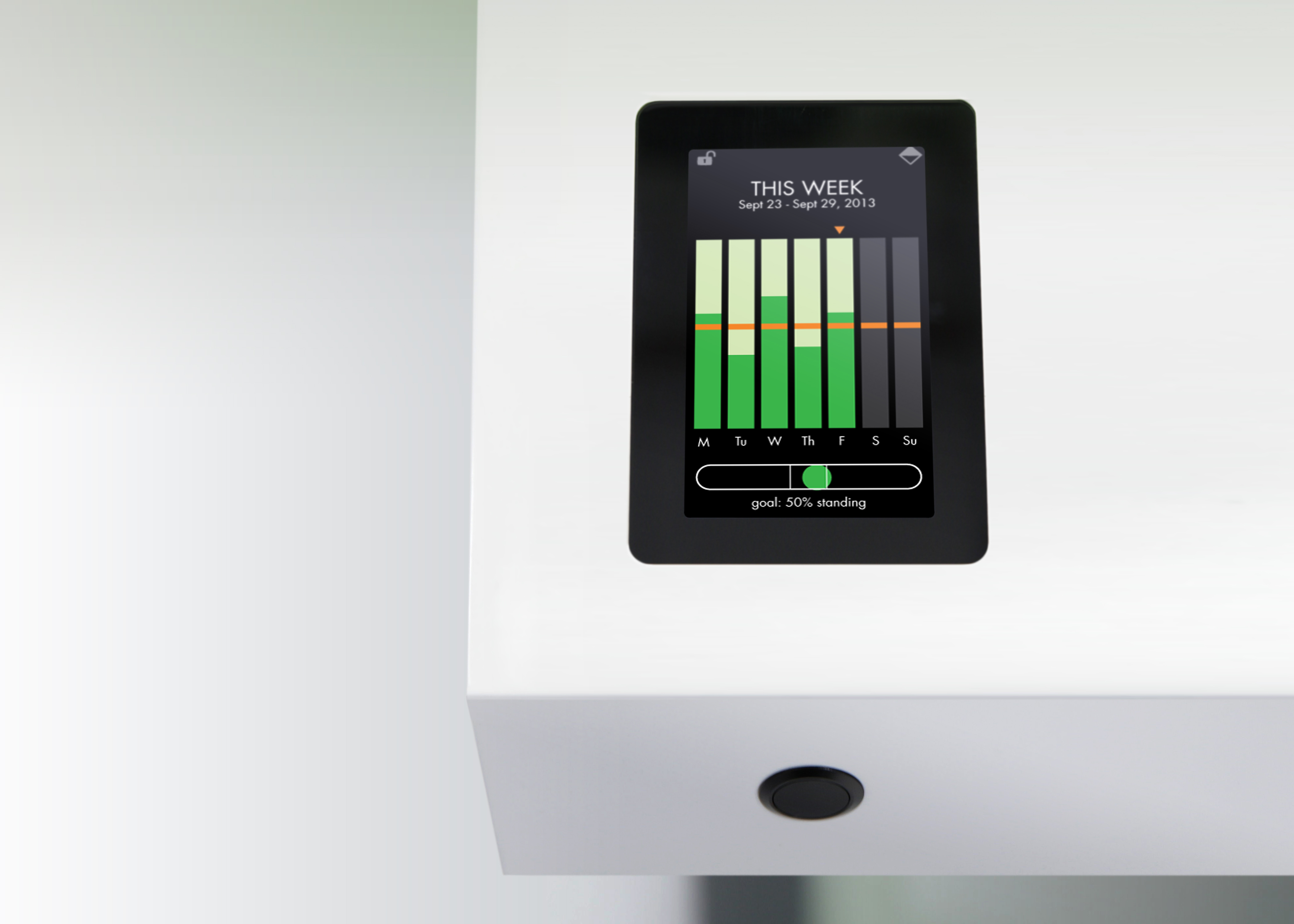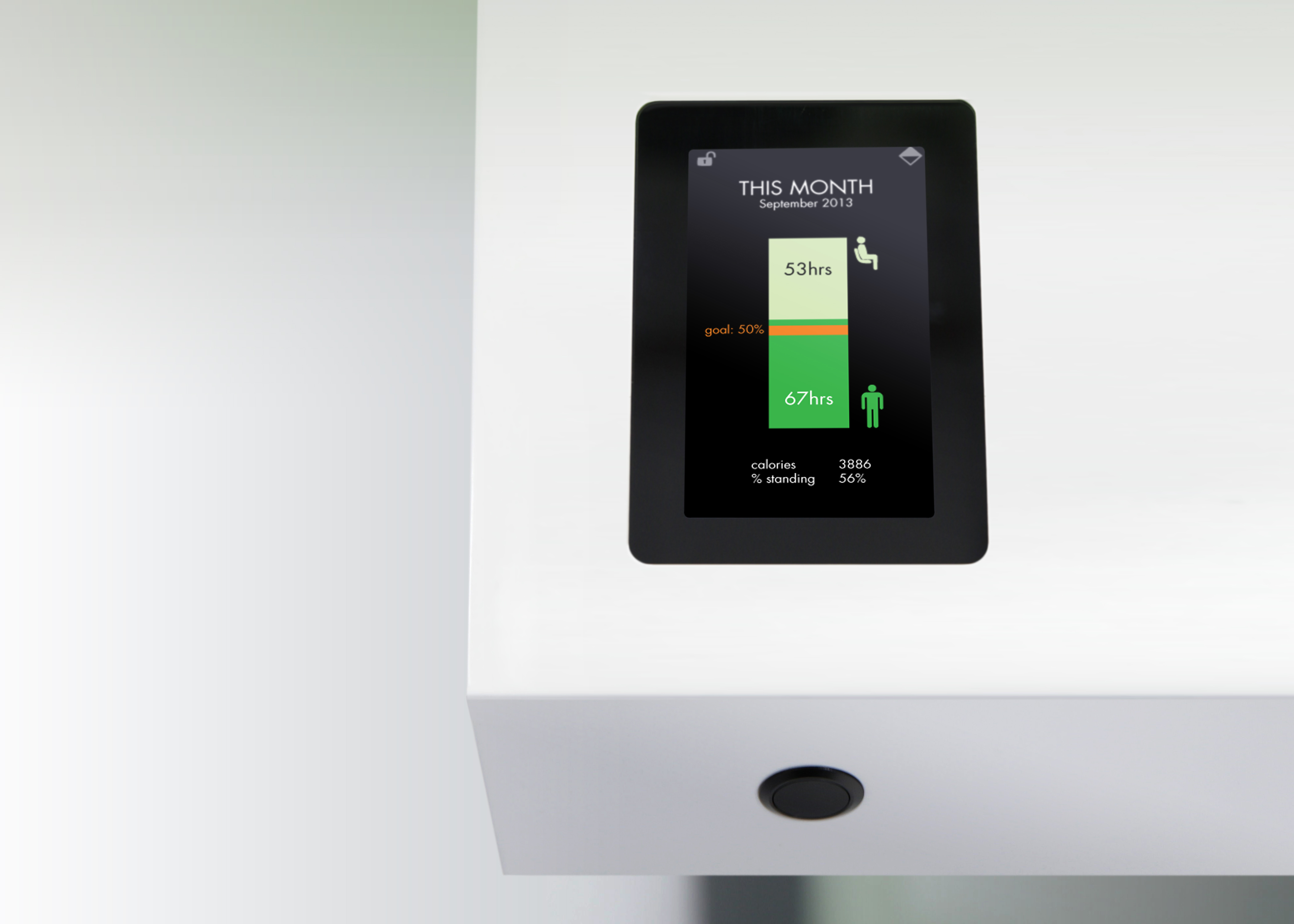Stir Kinetic Desk: Linux-Powered Furniture That's Good For You
The Stir Kinetic Desk promises to be a piece of office equipment for the modern age of sensors, the quantified self, and lots of trans fat. On the other hand, its sticker price may shock you into rigor mortis before obesity will. Check out our hands-on.
Is Stir Your Next Desk?
The Stir Kinetic Desk has a hard wood core, and comes with different finishes, like maple or white lacquer, each with a polymer hard coat. Underneath is a steel subframe, with a steel internal cross-linked frame structure holding everything in place so that the entire structure remains rigid, whether it is lowered or raised. The legs and feet are also steel, and the desk uses screw-jack actuation for smooth vertical movement.
The desk weighs about 150 pounds, and has a 75-pound dynamic load capacity. It's 58.5 inches across, 29.5 inches deep, and 3.5 inches thick.
Hidden cavities in the back part of the desk house AC (eight plugs) and USB (four ports), all powered through a single cord, color matched to the underside of the desk. Labrosse may have learned a trick or two at Apple.
On the desk's lower left-hand surface sits a 4.3-inch capacitive touch screen display. Double tap its surface and the desk moves to its next highest position. You can make minor adjustments: its range of motion is 25 to 51 inches, and the desk will ultimately stand to serve someone 6'10" (I'm sure if you're taller than that, you can get creative...and I need you for my Monday night basketball league team).
Powering all of this is an 800 MHz ARM9 processor complemented by 256 MB of RAM. It's packing Bluetooth 4.0, 802.11n Wi-Fi, a thermal presence sensor, and a three-axis accelerometer. The Bluetooth capability could, theoretically, let you go for a run at lunch and sync your Jawbone or Fitbit data with the desk app for a more complete health picture. The underlying control system is based on Linux, and includes movement algorithms and the ability to learn and adjust to your habits.
The thermal sensor knows when you arrive and tracks how much time you're sitting and standing. Labrosse says one of the goals is to learn the best times to remind you to stand, and it sends those reminders with what he calls a "whisper breath." As creepy as that might sound, it's actually an apt description. If you've been sitting too long, the desk rises and falls (just once) an inch at the general interval of a human breath at rest (about six seconds). In my own experience, it felt like the desk was making a gentle sigh.
The idea, of course, is that workers may forget that it's time to change working position, and while you could set an alarm on your phone to remind you, that could also be an unwelcome distraction, especially if you're "in the zone." The whisper breath is unlikely to break your concentration, at least in my brief experience with it. Whether or not you decide to acknowledge the reminder, Stir learns, and then tries to fit more seamlessly into your work habits and desires. Fittingly, it sends all of your bad behavior to the NSA (just wanted to see if you were paying attention).
Get Tom's Hardware's best news and in-depth reviews, straight to your inbox.
You can set preferences instead of using the pre-set defaults (essentially presets for when you want to sit and stand). For instance, you can set the percentage of time you want to stand, or the maximum length of time.
If you turn on learning mode, it will refine things from there. Labrosse says that many people like to stand more in the afternoon, for example. He adds that the company is testing concepts for rampup modes, since standing for long periods is more difficult in the beginning. The idea is that the desk should provide encouragement, rather than dictating a habit, so that the user is in control.
Through all of this, it is also tracking how many calories you're burning while standing.
Labrosse says that the company is in the final stages of getting ready for mass production. Stir is working with a manufacturer in Nashville, TN on the structural pieces and electronics. The outer shell is being hand crafted and hand finished in Brooklyn, NY. Labrosse says it's a classic furniture process, and the build-out partner is a family-owned business that has been around for decades. Right now, all of the software development work is going through final testing.
Current page: Is Stir Your Next Desk?
Prev Page The Health And Productivity Benefits Of Standing-
husker First of all it is not "elegant" at all. It is a rectangle with very crude looking legs that obviously telescope up and down, and don't even hide that crude functionality from showing. There are no curves anywhere, all very heavy blocky shapes which gives the whole thing a very ugly (early) lego-block look. It is no more "elegantly" designed than a folding table at your average yard sale or church banquet. Secondly, all it does it tell you to sit and stand? Why not just have a reminder on your phone or run a computer program that reminds you every so often to sit and stand. Then have a simple desk that you need to raise and lower yourself. It is exercise they are promoting, right? What a complete waste of money.Reply -
f-14 nothing new. i have seen a better version made by some nordic company denmark/finland/sweeden i don't remember exactly, i just remember it was expensive $3k-5k-7k depending if you wanted the hand crank version, the electric push button switch version or the digital version which had automation to make you sit stand or change positions after a certain amount of time.Reply
http://podanys.com/products/sit-stand-desk -
sempifi99 This is very cool and innovative. If the price was affordable I would get one for sure.Reply -
knowom I guess that's not all he learned while at Apple apparently learned all about sticker shock and ways to market overpriced stuff.Reply -
16bit Very interesting, but too pricey to be widely implemented. Unfortunately it looks like I won't be trying out one of these desks any time soon.Reply
